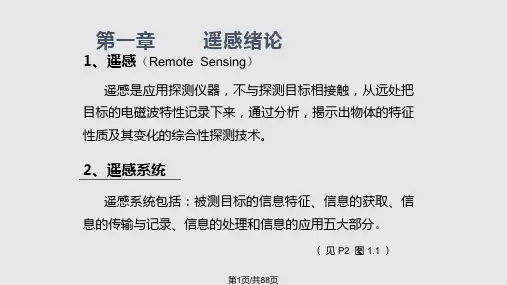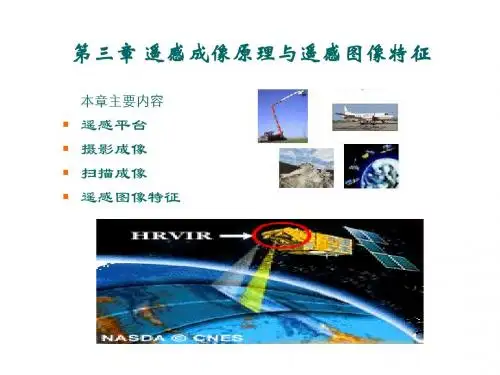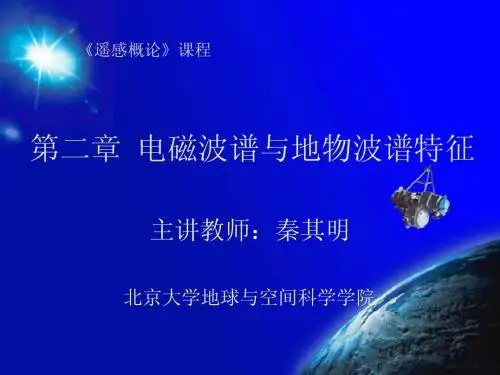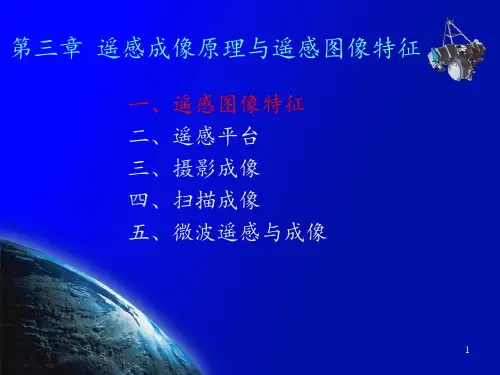在光谱维上展开的多光谱遥感数据 在时间维上展开的多时相遥感数据 在角度维上展开的多角度遥感数据 。。。。。
3
(一)空间分辨率
空间分辨率(又称地面分辨率):后者是针对地面而言,指 可以识别的最小地面距离或最小目标物的大小;前者是针对 遥感器或图像而言的,指图像上能够详细区分的最小单元的 尺寸或大小。 三种表示法: (1)像元(pixel),指单个像元所对应的地面面积大小,单位 为米(m)或公里(km)。 像元是扫描影像的基本单元,是成像过程中或同计算 机处理时的基本采样点。 (2)瞬时视场(IFOV),指遥感器内单个探测元件的受光角 度或观测视野,单位为毫弧度,IFOV越小,最小可分辨率单 元越小,空间分辨率越高。 (3)线对数(linear pairs),对于摄影系统而言,影像最小单元 的确定往往通过1毫米间隔内包含的线对数,单位为线对/毫 4 米。
15
第三章 遥感成像原理与遥感图像特征
一、遥感图像特征 二、遥感平台 三、摄影成像 四、扫描成像 五、微波遥感与成像
16
遥感平台
1、遥感卫星姿态与轨道
2、遥感平台与遥感影像的关系 3、遥感平台分类
17
遥感卫星姿态
决定遥感平台姿态的6个自由度:三轴方向(X,Y,Z) 及姿态角(φ,ω,k),其中任一个发生变化,都 会给遥感图像带来不同的变形。
Landsat-1 1972.7.23
Landsat-2 1975.1.22 Landsat-3 Landsat-5 1978.3.5 1984.3.1 Landsat-4 1982.7.16 Landsat-6 1993.10.5
MSS4,MSS5,MSS6,MSS7
RBV1,RBV2,RBV3 MSS4,MSS5,MSS6,MSS7 RBV1,RBV2,RBV3 MSS4,MSS5,MSS6,MSS7,MSS8 RBV全色波段










